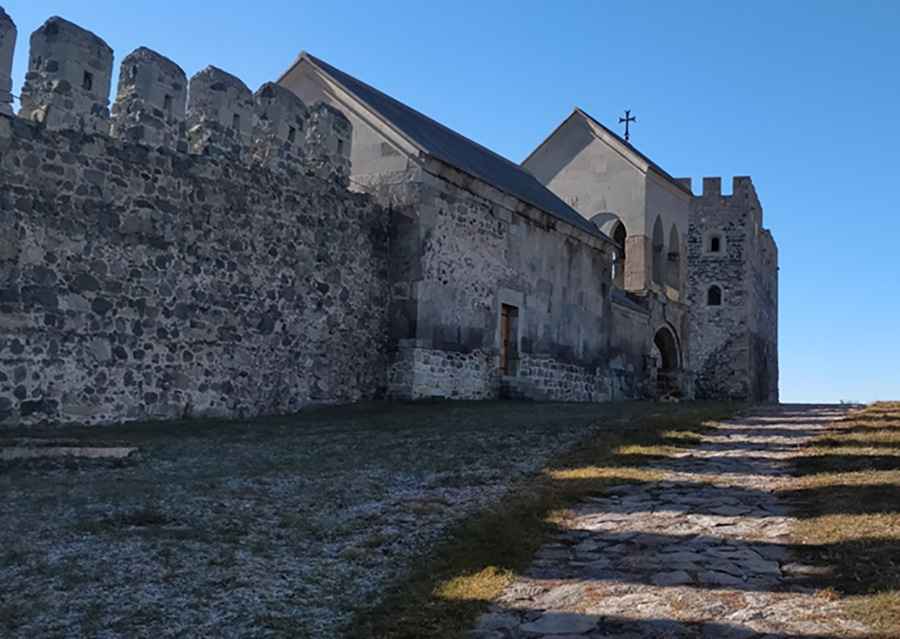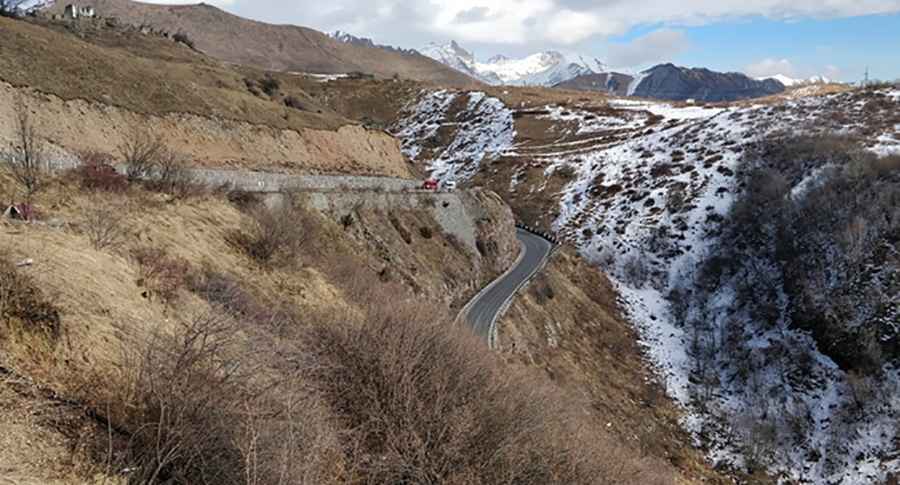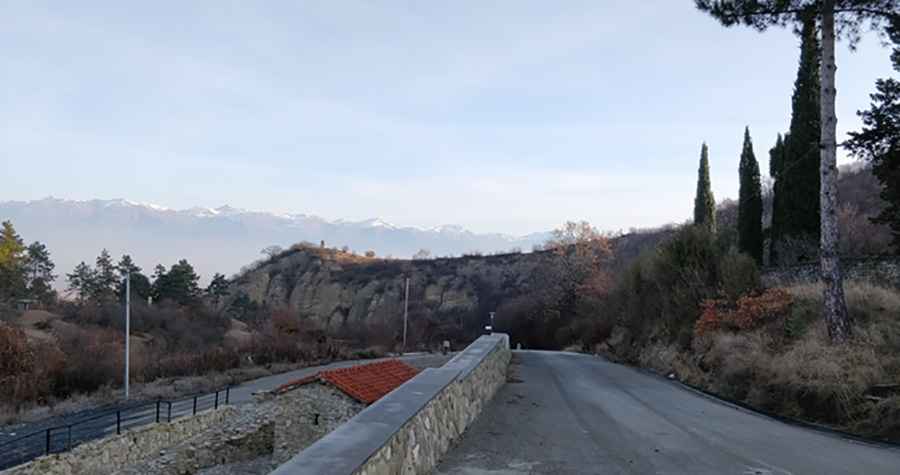Georgia, the Country: Where the Roads Are as Wild as the Mountains
Most Americans hear "Georgia" and think of peaches, southern drawls, and I-75. But the Georgia we’re talking about lies on the other side of the world — a small, mountainous country tucked between Russia and Turkey, known for its ancient history, bold wines, and jaw-dropping landscapes. It’s a land of deep valleys, medieval stone towers, and winding mountain roads that slice across the mighty Caucasus.

And those roads? They’re beautiful, no doubt — but they’re also among the most dangerous and unforgiving in the world. You’re not just driving through the mountains here — you’re driving into them, above clouds, along crumbling cliff edges, and through riverbeds that double as roads during the rainy season.
Tourists arrive in Tbilisi, fall in love with khinkali and Georgian hospitality, and then rent a car to “head to the mountains.” It sounds like an adventure — and it is. But unless you’re well-prepared, it can turn from postcard to panic in a matter of minutes.
The Danger Is Real: High Altitudes, No Guardrails, and Unpredictable Conditions
Let’s take Abano Pass, for example. This is the only road leading into the remote Tusheti region, and it's one of the highest drivable mountain passes in Europe — over 9,000 feet above sea level. The road is dirt, narrow, often muddy, and has zero guardrails. One wrong move, one distracted glance, and you’re not skidding — you’re falling. Hundreds of feet.
In winter, the pass is completely closed — not by barriers, but by walls of snow and ice. In spring, landslides are common. In summer, you’ll find tourist SUVs crawling along the cliff sides while shepherds move livestock in the opposite direction. There’s barely room for one car, let alone two.
And that’s just one example. Other roads — like the route to Shatili through Datvisjvari Pass or the Goderdzi Pass in the south — are no less dramatic. Asphalt might turn to gravel without warning. Paved roads may look good on the map, but “paved” in Georgia can mean anything from fresh blacktop to broken concrete and loose stones.
The beauty of the Caucasus Mountains is inseparable from their rawness. Driving here is not a casual task — it’s an act of respect.
Why Local Driving Experience Matters
There’s a reason Georgian drivers seem fearless: many of them grew up navigating these roads. For an outsider, especially someone used to wide American highways and generous shoulders, the learning curve is steep — and often vertical.

One American traveler we spoke to, Paul from Seattle, rented an SUV in Kutaisi and tried to drive to Mestia in Svaneti. The GPS sent him via Ushguli — one of the highest inhabited villages in Europe. What the map didn’t mention? The “road” was barely wider than his rental car, clung to a cliff, and hadn’t seen maintenance in years. He ended up reversing nearly a mile downhill after meeting a local logging truck with no space to pass. “It was the most beautiful drive of my life,” Paul said, “but also the most terrifying. I honestly thought we were going to die more than once.”
His story isn’t unique. Google Maps doesn’t account for landslides, rockfalls, or the fact that a so-called “route” might be a dry riverbed during the day and a flash flood zone by night. Locals know which turns to avoid, which roads to skip during the rain, and when to turn back. Most tourists don’t.
Weather, Seasons, and Sudden Changes
In Georgia, the weather doesn’t change — it flips. You can be driving under a bright blue sky and, fifteen minutes later, find yourself in dense fog, icy rain, or even snow — yes, even in June. Elevation changes rapidly here. That sunny valley you left behind is often thousands of feet below the pass you’re now approaching.
Abano Pass is typically only open from June to early October, and even then, it’s unpredictable. A rainstorm can cause a landslide that shuts the road for hours or days. Datvisjvari, which leads to Khevsureti and Shatili, often closes with little warning.
It’s not just precipitation. Fog is a serious issue, especially in the early morning or evening. Visibility can drop to zero, and with no lights, no lines, and no barriers, you're driving on faith — and friction. If you’re planning a drive into the mountains, always leave early in the day. Always check local reports — and don’t trust weather apps blindly. Locals, guesthouse owners, and even gas station attendants often know more than your smartphone does.
Vehicle Choice Can Save Your Life
Think twice before renting that cute little sedan. Just because it’s cheaper doesn’t mean it’s safer. In fact, many mountain regions in Georgia should never be attempted without a true 4x4 with high clearance. And no, we’re not talking about a crossover — we mean real off-road capability.
Even then, your tires matter. Some rental agencies offer SUVs with bald summer tires — great for city driving, but terrifying on wet clay or loose gravel. Before you drive off, check your spare. Check the jack. Make sure the handbrake works. And ask for a physical map if you're heading anywhere outside the major cities — cell coverage fades quickly in the highlands.
One useful trick: if you’re unsure whether a road is passable, look at the direction local marshrutkas (minibuses) go. If they don’t take that route, you probably shouldn’t either.
Quick tip for travelers renting a car in Georgia
Not all rental companies offer full insurance that covers off-road or mountain driving. Make sure to ask about coverage for gravel roads, river crossings, and high-altitude areas like Tusheti or Svaneti.
Services like Getmancar, MyAuto, GSS Car Rental, or Local Rent Georgia often have 4x4 options, but read the fine print — some contracts explicitly forbid driving on unpaved passes. If you're unsure, go with a provider that specializes in rural travel. It's better to spend a bit more than to end up stranded — or uninsured — in the middle of nowhere.
And yes,tow trucks do exist in Georgia, but they don’t patrol the mountains. If you need one, it could take hours (or even a full day) to reach you, depending on where you are.
If you need to rent a car in advance, we recommend choosing and booking it through the following link: https://getmancar.com/tbilisi/rent.
If Something Goes Wrong: What You Need to Know
Let’s be honest: if you crash or break down in the remote parts of Georgia, help might not arrive quickly. Cell coverage is spotty at best — in some regions, it’s nonexistent. Emergency numbers like 112 are responsive, but they may not be able to locate you precisely. That’s why it’s crucial to tell someone where you’re going — a hotel, a friend, or even your rental company. Let them know your route and estimated arrival time.

Most roadside areas are too narrow to stop safely. If you do break down, try to find a wider stretch or a visible pull-off. Set up hazard lights and get clear of the vehicle, especially on blind curves.
Locals are generally kind and helpful — if someone stops to assist you, they probably mean it. That said, don’t rely on passing traffic, especially in Tusheti or high Svaneti. Some roads see fewer than ten cars a day.
There are no "turnaround zones" in the high mountains. If the road looks sketchy and you’re unsure — turn back early. Do not push forward hoping it gets better. It usually doesn't.
Georgia’s Mountains Are Beautiful – and Unforgiving
Driving through the mountains of Georgia is one of the most thrilling experiences a traveler can have. The views are epic. The roads are raw. The sense of freedom is unlike anywhere else. But so is the risk. These are not highways — they’re narrow arteries carved into rock, ice, and mud. They demand respect, focus, and humility.
If you’re planning to take them on, go prepared. Know your limits. Rent the right car. Check the weather. Ask locals. And most importantly — don’t let pride get in the way of good judgment. Sometimes, the bravest thing you can do on these roads… is turn around.